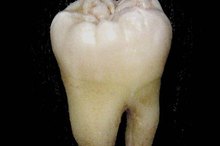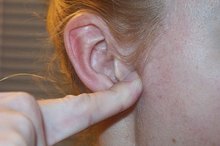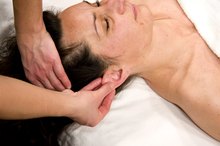Pressure Points to Alleviate Hiccups
Hiccups can be frustrating, but they can be rapidly controlled by pressure points. Hiccups occur when the diaphragm abruptly contracts, instead of undulating regularly as during normal breathing 2. A burst of air floods the lungs, then the epiglottis closes, trapping the air and creating the familiar “hic” sound.
Face Pressure Point
Find the center of your philtrum, which is the groove between your upper lip and nose. It is more pronounced in some people. Press in the center of this groove, pushing in towards the teeth. Press and hold for 20 to 30 seconds.
- Find the center of your philtrum, which is the groove between your upper lip and nose.
- Press in the center of this groove, pushing in towards the teeth.
Chest Pressure Point
How to Stop Wisdom Tooth Pain with Pressure Points
Learn More
Locate your breastbone, a long narrow bone that connects your ribs. Trace the bone down the front of your chest to its tip. Press a fingertip just below the bone, pressing towards your back. Press carefully, as the sternum (the tip of the breastplate) is fragile, and hold for 20 to 30 seconds.
- Locate your breastbone, a long narrow bone that connects your ribs.
- Trace the bone down the front of your chest to its tip.
Abdominal Pressure Point
Trace a line between the belly button and pubic bone, down the center of the abdomen. The pressure point lies in the center of this line, near where you might push for the Heimlich Maneuver. In this case, use your fingertips (not your fist!) to press in, towards your backbone, holding for 20 to 30 seconds.
- Trace a line between the belly button and pubic bone, down the center of the abdomen.
- The pressure point lies in the center of this line, near where you might push for the Heimlich Maneuver.
Arm Pressure Point
Symptoms of a Broken Sternum
Learn More
Make a fist and notice the two prominent tendons on the inside of your forearm. Starting at your deepest wrist crease, measure down two thumb widths and press between these two tendons. Press down and hold for 20 to 30 seconds.
Hiccup Red Flag
Long-term hiccups may be a sign of a larger medical problem and should be referred to your primary care physician. Pressure point self-care should be considered a stopgap measure and not a replacement for professional intervention.
Related Articles
References
- Stanford University: Acupressure Point Finder
- madsci.org: The Physiology of Hiccups
- University of Michigan. Hiccups. June 26, 2019.
- Komaroff, AL. What causes hiccups? Harvard Health Letter. May 2018.
- U.S. National Library of Medicine. Hiccups. Updated March 2, 2020.
- Prince G, Sergel M. Persistent hiccups as an atypical presenting complaint of COVID-19. Am J Emerg Med. 2020;38(7):1546.e5-1546.e6. doi:10.1016/j.ajem.2020.04.045
- Genetic and Rare Disease Information Center. Chronic hiccups. Updated Aug. 24, 2015.
Resources
Writer Bio
Sophie Bloom has been a professional writer since 2000, writing for nonprofits including the American Foundation for the Blind and The Adult Literacy Media Alliance. She received her Bachelor of Arts degree in culture and media studies from Johns Hopkins University and her Master of Science in acupuncture from Tri-State College of Acupuncture in New York City.









